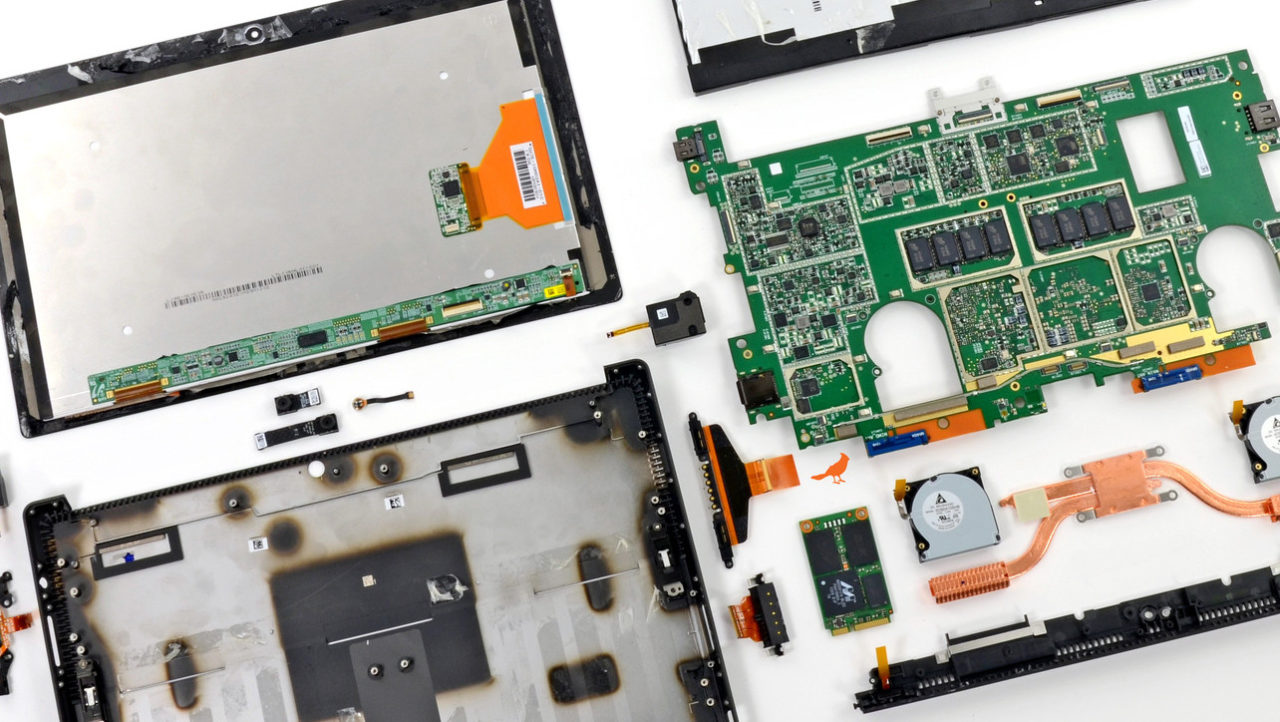Repairability Chart Outs Industry Focus on Disposable Tablets

The shift of the computing industry from big open boxes to small tightly-integrated mobile devices, started in many ways by Apple in the early 2000s, has led to a new era of portability and functionality. But it has also deprived customers of expandability, customization, and repairability. For most users purchasing new tablets and ultrabooks, the days of upgrading and repairing hardware post-purchase are over. From the perspective of many companies, consumers are encouraged to view new devices through a lens of disposability.
Thankfully, the fine folks over at iFixit have pledged for years to keep consumers informed about the sacrifices to repairability and upgradability they’ll have to make when moving to a new device, and the firm has just published a new table summarizing the results of its efforts.
The “Tablet Repairability Scores” chart currently lists 18 devices from all major tablet manufacturers, including Apple, Amazon, Samsung, and Dell. Based on iFixit’s extensive teardowns of each device, the firm has assigned an overall “repairability score” and ranked them accordingly.
It’s not surprising to find Apple, which pioneered the mass adoption of tightly integrated devices with the launch of the first iMac in 1998, low on the list, while Dell, which still clings to the traditional desktop PC market, is ranked near the top. In fact, the Dell XPS 10, a $500 Windows 8 tablet released in early 2013, takes the top score for repairability, at 9 out of a possible 10. Conversely, Apple’s recent iPad models take four out of the bottom five spots with an average repairability score of 2 out of 10.
Interestingly, Microsoft’s newly-launched Surface Pro scores dead last, due to a nearly insurmountable amount of adhesive holding the components together. Indeed, opening the Surface Pro is a risky proposition that risks shearing cables and cracking displays.
Apple has made its choice to limit users’ ability to repair and upgrade the company’s portable devices, but the high repairability scores of products from Dell and Amazon show that a balance can be struck between the allure of portability and battery life and the usefulness of post-purchase repairability.
As iFixit explains in its press release announcing the new chart: “Every time you walk into an electronics store, you’re making a choice. Every gadget you buy is a vote cast. We want people to make informed decisions, as their votes influence how hardware manufacturers choose to design in the future.”
Tight integration has indeed brought a new level of convenience and performance to computing, but whether the industry shifts entirely to a disposable mentality is up to consumers. iFixit’s guide gives concerned consumers an excellent starting point for making informed purchasing decisions.
















